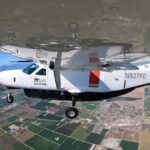 Hyundai Motor and Kia have introduced the X-ble Shoulder—a wearable robot designed to ease the strain of aircraft maintenance. If you’ve ever struggled with the physical demands of overhead work, this device aims to transform your experience by offering much-needed support during critical tasks.
Hyundai Motor and Kia have introduced the X-ble Shoulder—a wearable robot designed to ease the strain of aircraft maintenance. If you’ve ever struggled with the physical demands of overhead work, this device aims to transform your experience by offering much-needed support during critical tasks.
At a recent event in Korean Air’s Incheon maintenance hangar, industry leaders showcased how the X-ble Shoulder not only boosts productivity but also enhances worker safety. The innovative device provides targeted upper-arm assistance, significantly lowering the risk of shoulder injuries and fatigue.
Dong Jin Hyun, vice president and head of the Robotics LAB at Hyundai Motor and Kia, explained that the development of this technology was a true team effort. He noted, “The X-ble Shoulder reflects the dedication and expertise of our staff, and we’re keen to see its benefits extend across multiple industries.”
A standout feature of the robot is its non-powered torque generation mechanism. This clever design eliminates the need for batteries, keeping the device lightweight and ensuring it can operate continuously. The integrated muscle compensation module also plays a key role in reducing overall muscle activity during strenuous tasks.
Korean Air’s managing vice president, Hyunboh Jung, shared his confidence in the technology. He said the device is set to play an important role in maintaining high safety and quality standards in both aircraft manufacturing and maintenance, with plans to roll it out even further.
Looking ahead, Hyundai and Kia are planning broader distribution to pre-order customers and are eyeing sectors such as construction and agriculture, with an eye on the global market by 2026. The forward-thinking approach is designed to bring practical, ergonomic solutions to a variety of challenging work environments.
The X-ble Shoulder has been rigorously tested with input from more than 300 workers, ensuring that every design detail—from its carbon composite framework to its detachable vest—fits the demands of modern industry. Its adaptable, modular design means it can easily be integrated with standard work attire while providing robust protection against impact.
This smart piece of engineering emphasises genuine, practical benefits over flashy promises, giving workers a new way to manage physically taxing work.








